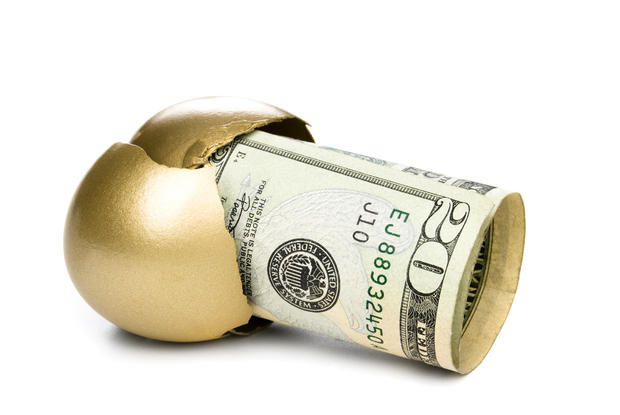Make these 10 money moves before 2015 is over
By Barbara Friedberg/GOBankingRates
With 2016 just a few months away, now is the time to get your finances in order, whether by cleaning things out or laying the groundwork for next year.
Prioritize these 10 last-minute money moves to make your transition into 2016 easier and richer.
This article, 10 last-minute money moves for 2015, was originally published onGOBankingRates.com.
More from GOBankingRates:
1. Use up your expiring work benefits
The flexible spending account is a wonderful tax saver. Every year, you estimate how much money you expect to spend on health care or child care expenses. This amount, up to the $2,500 maximum, is then transferred into an FSA pre-tax and reduces your taxable income. Eligible expenses include out-of-pocket costs such as prescription drugs, doctor co-pays, and vision and dental costs. The savings come because you pay for these qualified expenses with the pre-tax monies.
The downside of the FSA is that if you don't use the money by the end of the year, you lose most of it. Fortunately, there are new rules that allow you to use most of the FSA contributions, according to the Society of Human Resource Management.
2. Give to charity and get a tax break
This is one of my favorites. Giving to charity helps others and benefits you. Giving to charity includes making cash contributions to eligible organizations as well as donating gently used clothing and household items to charitable entities such as Goodwill and the Salvation Army.
If you itemize your taxes, you can claim both cash and non-cash contributions on Schedule A of the 1040 tax form. Claiming a charitable deduction is fully explained in the IRS.gov publications 526 and 561. Simply stated, you keep track of cash and non-cash charitable deductions, input the information on your Schedule A, and this amount is deducted from your taxable income, reducing the tax you pay.
I make it a habit to donate my old stuff to charity during the year. Every month or so, I go through the cabinets and closets and fill up a bag to donate. Be sure to hang on to the receipts to add up the deduction on your tax form.
3. Contribute to an IRA
The more money you can contribute to tax-advantaged accounts, the lower your tax bill and the more money you'll sock away for retirement. If you contribute to a traditional individual retirement account, you might qualify for a tax deduction if your workplace doesn't offer a 401(k). If you are covered by a retirement plan at work and your income is above a certain level, however, then you might not be able to contribute the full amount to an IRA.
The IRS.gov website gives the latest updates about IRA contribution and deduction limits. For 2015 returns, singles earning more than $71,000 lose the tax break if they're covered at work. Married couples can earn up to $191,000 and still take the IRA tax deduction as long as only one spouse is covered by a workplace plan. The tax break is eliminated for married couples making more than $116,000 if they are covered by a workplace plan.
4. Declutter your finances
Jim Wang, personal finance expert and publisher of Wallet Hacks, recommended decluttering your wallet or purse.
"Remove old receipts, old cards and other junk you've accumulated," he said. "Clutter can have a negative impact on your brain, and your wallet or purse is a small enough place to clean out quickly."
"While you're at it, see if you can limit the number of credit cards you carry to just one or two," he added. "Try to limit yourself to only carrying the essentials and then adding other items back as you notice them missing. I did this several years ago and have never looked back."
Simplifying your purse, wallet, accounts and credit cards can make your life more manageable. You'll feel less weighed down physically as well as less tempted to use credit.
5. Max out your 401(k)
Similar to increasing IRA contributions, the same strategy also works for your workplace retirement account. If you can contribute a few more dollars into a 401(k) or 403(b), you'll save on taxes this year and add to your retirement nest egg.
Even if you can't hit the maximum allowable contribution of $18,000 for 2015, or $24,000 for those over age 50, bumping up your annual amount will save you a few extra dollars by reducing the taxes you'll owe in April. Although these extra contributions might seem impossible, you'll be surprised at how your spending will adjust when there's less money available.
6. Understand your effective tax rate
Knowing your effective tax rate helps you decide whether to contribute pre-tax income to your 401(k) or after-tax earnings to a Roth IRA. Consider this example: Kelly is single with net income of $80,000. Under normal circumstances, she's in the 25 percent tax bracket and would owe $15,794. Assume that she has $10,000 in deductions, which reduces her taxable income to $70,000. At the lower taxable income, her effective tax rate, or actually taxes paid divided by her taxable income, will only be 19 percent.
If Kelly thinks taxes will rise and that she'll be in a higher tax bracket in retirement, then she might decide to pay taxes now and invest in a Roth IRA this year. In retirement, when she's in a higher tax bracket, she'll withdraw funds from her Roth IRA and owe no tax.
7. Harvest your tax losses
All investors make mistakes. If you made an investment that didn't perform as expected, you might want to sell that investment and use the capital loss to offset some of your capital gains. Before rushing in to sell your losers, there are a few factors to consider. If a good company has a short-term problem, and you think its price will recover, you might want to hang on to the investment. It's rarely a good idea to let taxes drive investment decisions.
Another consideration is the wash-sale rule, which prohibits you from repurchasing the same or an identical security within the next 30 days of the loss. Remember also that the write-off of net losses is limited to $3,000. In advance of implementing this end-of-year money move, you might want to consult your tax professional.
8. Remember the required minimum distribution
For people who are already retired and who are over 70½, make sure you take the required minimum distribution from your IRA accounts. Failure to make this move can cost you big money, including a 50 percent penalty on top of the taxes owed.
Even if you haven't hit the 70-year mark yet, if you've inherited mom or dad's IRA and have chosen to allocate distributions across your lifetime, you need to take a distribution. Understand the law when it comes to retirement plan distributions because there are steep penalties for failure to comply.
9. Convert your IRA if your income was lower this year
If your income was lower this year, you might want convert part or all of a traditional IRA to a Roth IRA. This smart move allows you to pay lower taxes on the conversion during a time when you're in a lower tax bracket.
Ultimately, the Roth IRA gives you more flexibility in the long term for tax-free withdrawals and no required minimum distributions. Keep in mind, the conversion deadline is Dec. 31, 2015.
10. Make a long-term plan
If you haven't done so already, now is the time to make a long-term financial plan. Map out your immediate, short-term and long-term money goals. From buying a washer and dryer next year to Junior's college expenses in 12 years, write it out. Don't forget retirement planning either.
After you have it all down on paper or an Excel spreadsheet, figure out how much you need to save toward each goal. Planning saving and investing out in advance gives you confidence that you're on the best financial path and helps reduce money stress.










